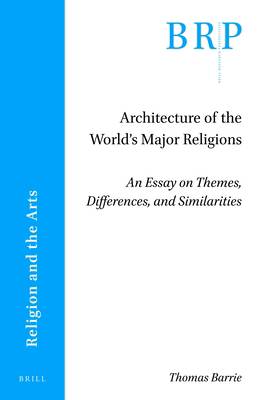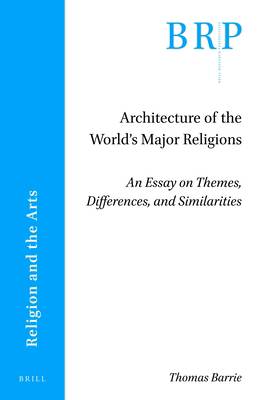
- Afhalen na 1 uur in een winkel met voorraad
- Gratis thuislevering in België vanaf € 30
- Ruim aanbod met 7 miljoen producten
- Afhalen na 1 uur in een winkel met voorraad
- Gratis thuislevering in België vanaf € 30
- Ruim aanbod met 7 miljoen producten
Zoeken
Architecture of the World's Major Religions
An Essay on Themes, Differences, and Similarities
Thomas Barrie
€ 271,95
+ 543 punten
Omschrijving
In Architecture of the World's Major Religions: An Essay on Themes, Differences, and Similarities, Thomas Barrie presents and explains religious architecture in ways that challenge predominant presumptions regarding its aesthetic, formal, spatial, and scenographic elements. Two positions frame its narrative: religious architecture is an amalgam of aesthetic, social, political, cultural, economic, and doctrinal elements; and these elements are materialized in often very different ways in the world's principal religions. Central to the work's theoretical approaches is the communicative and discursive agency of religious architecture, and the multisensory and ritual spaces it provides to create and deliver content. Subsequently, mythical and scriptural foundations, and symbols of ecclesiastical and political power are of equal interest to formal organizations of thresholds, paths, courts, and centers, and celestial and geometric alignments. Moreover, it is equally concerned with the aesthetic, visual and material cultures and the transcendent realms they were designed to evoke, as it is with the kinesthetic, the dynamic and multisensory experience of place and the tangible experiences of the body's interactions with architecture.
Specificaties
Betrokkenen
- Auteur(s):
- Uitgeverij:
Inhoud
- Aantal bladzijden:
- 116
- Taal:
- Engels
- Reeks:
Eigenschappen
- Productcode (EAN):
- 9789004441422
- Verschijningsdatum:
- 27/08/2020
- Uitvoering:
- Paperback
- Formaat:
- Trade paperback (VS)
- Afmetingen:
- 152 mm x 231 mm
- Gewicht:
- 136 g

Alleen bij Standaard Boekhandel
+ 543 punten op je klantenkaart van Standaard Boekhandel
Beoordelingen
We publiceren alleen reviews die voldoen aan de voorwaarden voor reviews. Bekijk onze voorwaarden voor reviews.











